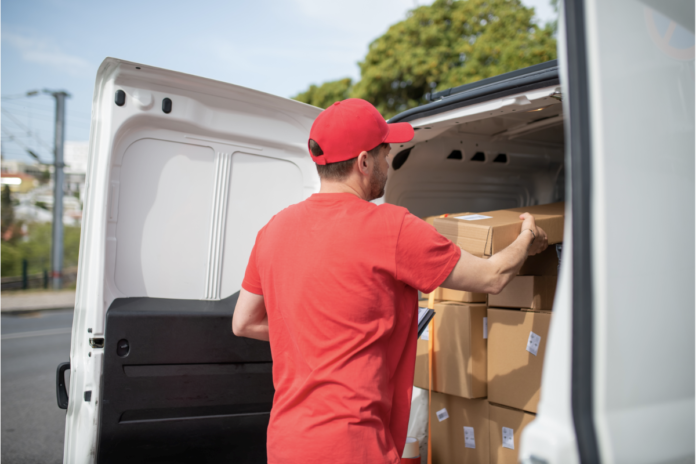
Until 2011, companies in need of delivery services had a variety of options but little variation. The last-mile logistics companies operating at that time offered basically the same type of service for approximately the same fee. Some were known to specialize in certain areas, such as international deliveries, but no player in the industry would have been considered disruptive.
Then Postmates appeared and launched a movement that revolutionized last-mile logistics. Postmates showed that crowdsourced delivery was a viable business model and opened the door for Uber Eats, DoorDash, Grubhub, and other companies to make last-mile logistics more accessible and affordable by leveraging the gig economy.
In the decade that followed the appearance of Postmates, crowdsourced delivery services had a significant influence on conventional last-mile logistics companies. The following are some last-mile logistics innovations that emerged from the crowdsourced delivery movement.
Mobile ordering
Mobile apps are the foundation of the crowdsourcing movement. They empower the network that connects drivers with customers who need their services, democratizing access to last-mile logistics.
The value that apps added to last-mile logistics inspired every major delivery company to prioritize app-based access. Visit the FedEx website today and you are encouraged to use its mobile app to access “a more convenient way to ship and track.”
As mobile technology has advanced, the apps used in last-mile logistics have evolved to provide much more than just ordering capability. They provide real-time status updates, a portal for delivery instruction, picture proof of delivery, and more. Mobile technology has also been adopted as the tool delivery companies use to recruit, deploy, and update drivers.
Streamlined scaling
In essence, turning to crowdsourcing for delivery services allowed companies to meet their last-mile logistics needs without hiring any drivers. Rather, a network of independent contractors — who set their own schedules and pursued their own goals — provided the workforce needed to keep customers satisfied.
After pure crowdsourced companies like Postmates proved the approach’s viability, conventional companies leveraged it to create services like Amazon Flex. The approach allows companies to streamline their scaling process without taking on significant risk. When seasonal demands increase delivery volumes, driver rosters can quickly be expanded with the independent contractor model.
To gain access to drivers, however, companies using the independent contractor model also must now carefully consider their pay structures. Whereas traditional drivers were committed to a particular company and a preset salary, independent contractors may deliver for multiple companies and prioritize the assignments that pay the best. To consistently have access to the best drivers, companies utilizing the crowdsourcing model must offer competitive rates.
Driver ratings
User-generated ratings are a big part of crowdsourcing, as those who have used ride-sharing platforms know. They provide the motivation for independent contractors to provide excellent service.
When delivery companies began to embrace independent contractors to help with scaling, they also adopted the type of rating systems that crowdsourced delivery companies employed. It is a tool that allows them to differentiate drivers and prioritize those who will not detract from their brand image.
Enhanced transparency
Initially, price transparency was a problem in the crowdsourced delivery space. Studies conducted during the delivery boom sparked by the Covid-19 pandemic showed that many crowdsourced delivery platforms failed to provide clear breakdowns of the fees they were charging their users.
Today, however, transparent pricing has come to be seen as a value-added feature companies can offer to differentiate themselves from the competition. It’s common today to see statements about a company’s commitment to transparency among the other information it provides on its ordering platforms. Transparency in pay structures is also an essential component of attracting skillful drivers.
Price bidding
With conventional delivery services, delivery companies determine their fees based on a variety of factors and communicate them to potential customers. Most crowdsourced delivery platforms take the same approach. However, a new approach is emerging from the crowdsourcing space that makes pricing more dynamic.
Price bidding platforms allow those with delivery needs to pit delivery drivers against each other in an auction setting. Customers communicate their delivery needs and invite drivers to bid on the price they would charge to provide them. This approach not only gives more control to the customer but also supports the type of flexibility crowdsourced drivers appreciate.
Crowdsourced delivery services have had a dramatic impact on last-mile logistics, disrupting conventional models with an approach that promises better efficiency, flexibility, and affordability. To compete, industry leaders have allowed the core components of crowdsourcing to inform their business models. The result is a more innovative marketplace in which both companies and consumers have more options to meet their delivery needs.
Find a Home-Based Business to Start-Up >>> Hundreds of Business Listings.















































